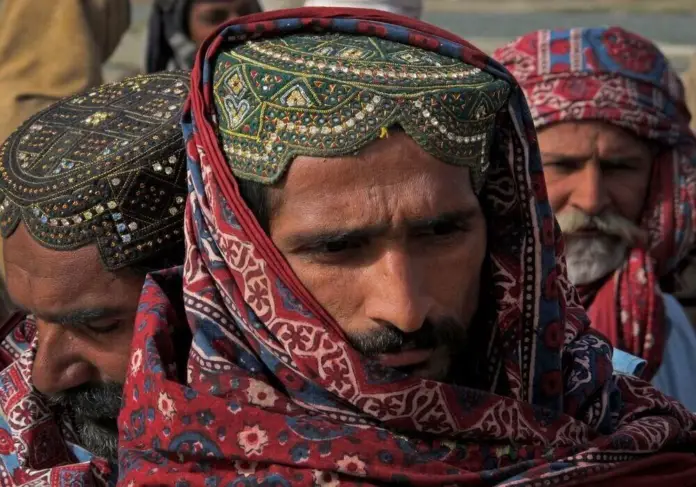Nothing is more agonising than witnessing a whole family devoured by the clashes on the issues of petty nature that could have otherwise been easily settled or overlooked. The bloodbaths of the tribal feuds in Sindh are a dark stain on the fibre of the land of Sufis, poets, and proponents of peace. In the starkest contrast to the Sindh government’s tall claims of peace, order and pragmatic management of the affairs of the province, the phantom of tribal feuds and subsequent bloodletting continues to haunt the northern parts of Sindh.
The memories of the recent grim incident of fighting among the Chachar Sabzoi Jagirani tribes in Kacha of Kashmore, in which a dozen tribesmen of the Chachar community were killed, were still haunting the area when a similar brutal intra-tribe clash in the border region of Ghotki among the Indhar tribe resulted in the brutal murder of 9 people. These are just two of the instances of the horrific and barbaric practice that has had dreaded consequences for each resident of the area.
The reasons behind the feuds are too petty. Disputes over access to water and land; heated arguments; grazing of land; matrimonial issues; disagreements over the limits of land; theft and dacoity; honour killings; and brouhaha on the minor fights of children are some of the factors that lead to horrific consequences.
A clash breaking between two tribes claims many innocent lives. Once a clash ensues, tribesmen of the warring factions are forced to be confined, unable to move freely and look after their properties and crops due to the fear of getting killed by the enemy tribe. This creates financial constraints and a crisis for the warring tribesmen with serious repercussions. Since they have to feed their dependents, they resort to crimes and end up as notorious bandits of the criminal world, holed up in the lawless area of Kacha where the state writ is almost absent. They operate networks of kidnapping for ransom, indulge in heinous crimes of extortion, and openly challenge the state’s authority. The areas under their control, particularly Kashmore, have been turned into a no-go zone for the local people.
The Kacha area adjoining Kashmore, Ghotki, Shikarpur and Sukkur districts are safe havens of criminal gangs operating with the assistance of tribal and feudal lords and in some cases, police. Criminal gangs are used by these elements for achieving their nefarious designs and for settling accounts with their opponents.
Children and women of the belligerent clans are the worst affected. Children growing up in the shadow of guns and sounds of firing end up as uneducated adults. Women are also badly victimised. As male members of the fighting clans can’t move freely, it’s the women who arrange and bring in the basic commodities to run the households. Resultantly, lives of these women turn into a hell of misery.
The northern districts of Sindh, including Khairpur, Shikarpur, Ghotki, Kashmore and Jacobabad, are notorious in this regard. The reason for the frequent tribal feuds in these areas is their identity of being safe havens and a paradise of criminals in the Kacha area-the lush forest in the Indus River adjoining this region.
What is behind the tribal bloodletting in the upper parts of Sindh? A number of factors contribute to this devilish practice. First and foremost is illiteracy. Since the literacy rate in the upper districts of Sindh, including Kashmore, Jacobabad, Ghotki and Shikarpur, is too low, emotions and egos rather than logic and reason drive most of the masses’ actions and affairs. A trivial issue is enough to start a bloody exchange.
Several lacunae in the judicial system and delayed or no redressal of grievances make people impatient, and they resort to personal retribution by taking law into their own hands. Due to this dwindling trust, the aggrieved avenges on his own. Had there been speedy redressal of public grievances and resolution of mutual disputes, minor issues couldn’t have assumed the shape of destructive tribal feuds.
The feudal mindset and system are other important factors. Since their ‘glory’ lies in people paying homage to them, feudal chiefs are hardly interested in the prompt resolution of the disputes before they turn violent. If people’s problems are resolved too easily and quickly, their ‘masters’ would think that people wouldn’t be bothered to pay allegiance to them. Feudal lords keep the masses entangled in a web of problems and subsequent bloodletting.
Police can’t be absolved of their share in this bloody mess. The concerned police officials mostly show apathy, oblivion, and partiality in the case of a regular person reporting an untoward incident. Police, most of the time, take the sides of their ‘lords’ who sponsor their postings in their areas. Hard pressed and compelled by the apathy of police, many victims prefer to join criminal gangs to earn support and power to avenge the brutalities done to them or their families. Most postings and appointments in these areas are not done on merit, and therefore, many officers work more at the payroll of their ‘bosses and lords’ rather than serve the cause of public good.
The panacea of the bloody feuds lies in improving educational standards and access, undoing the influence of feudal lords in public affairs and official spheres, assuring affordable and speedy justice to masses, and doing away with political appointments and postings. Integrated and practical measures would help to end the phenomenon of blood feuds in the upper Sindh.







